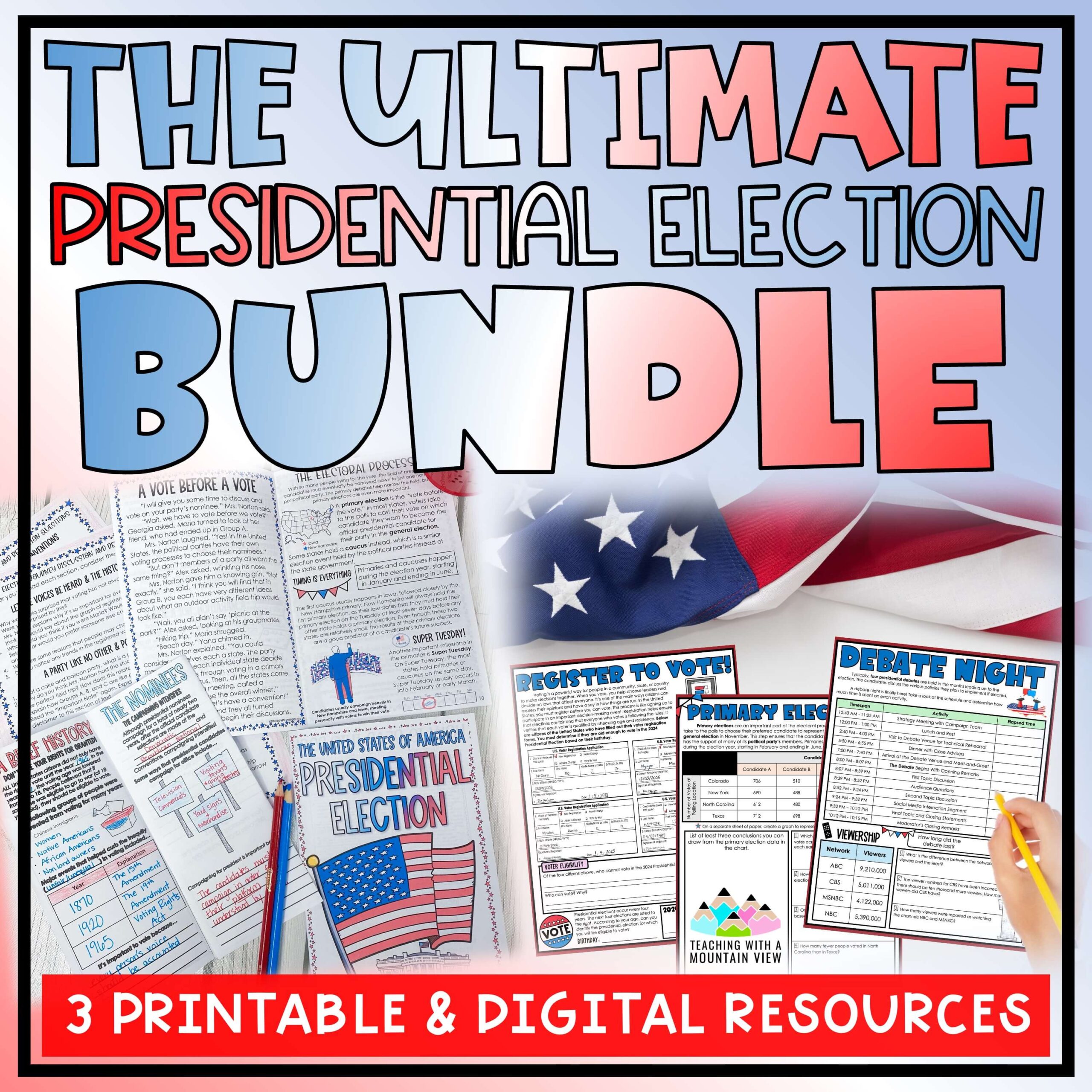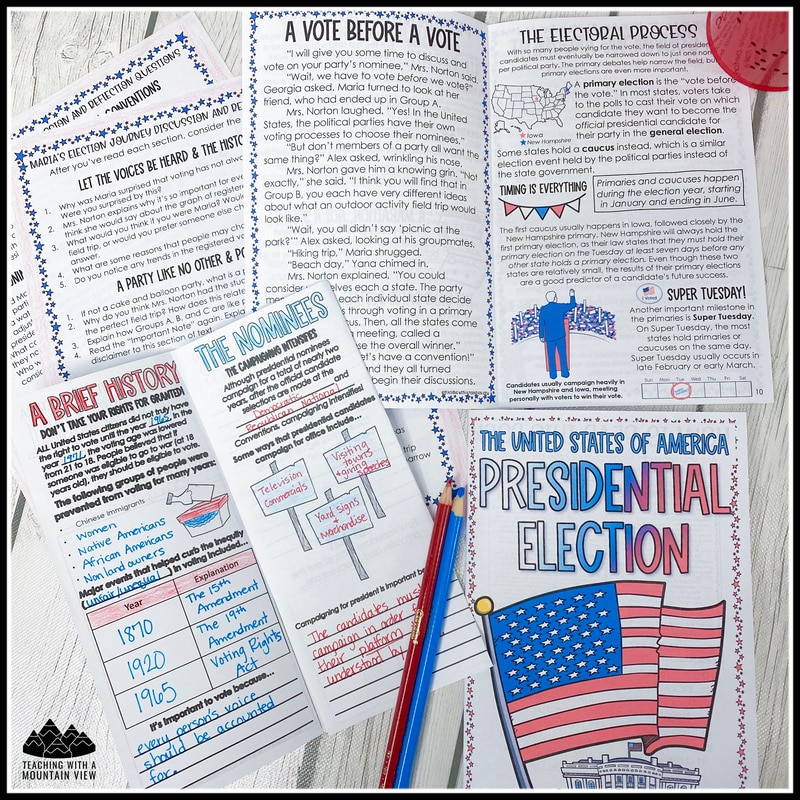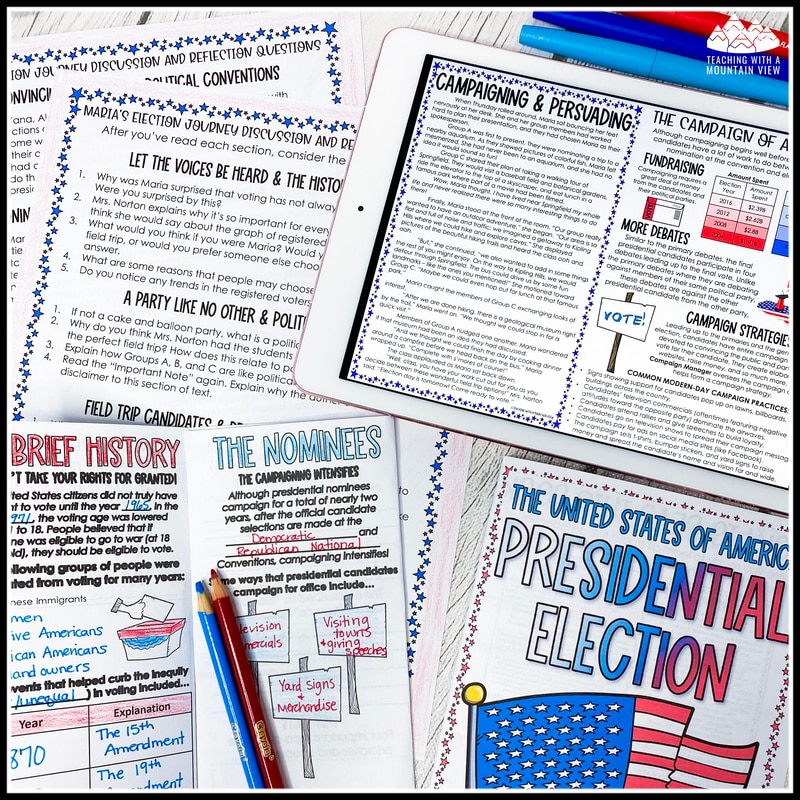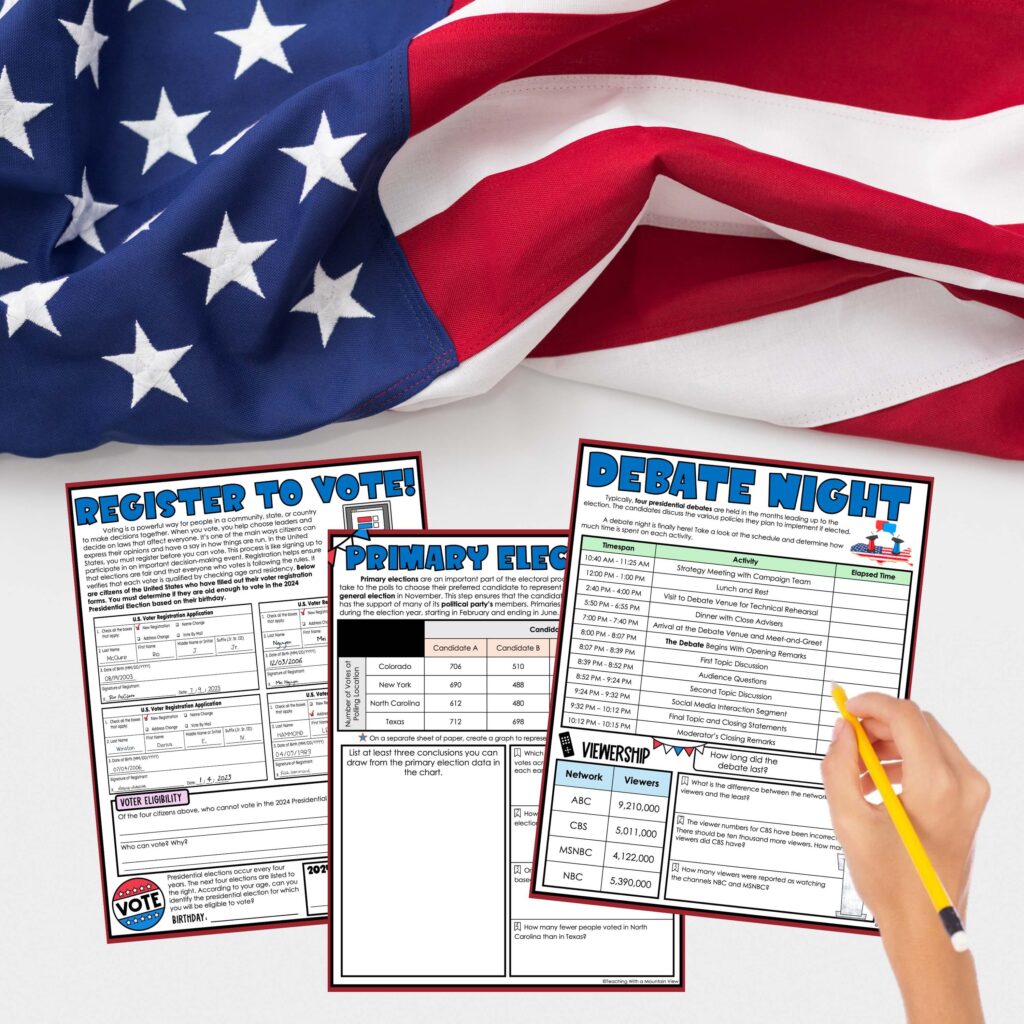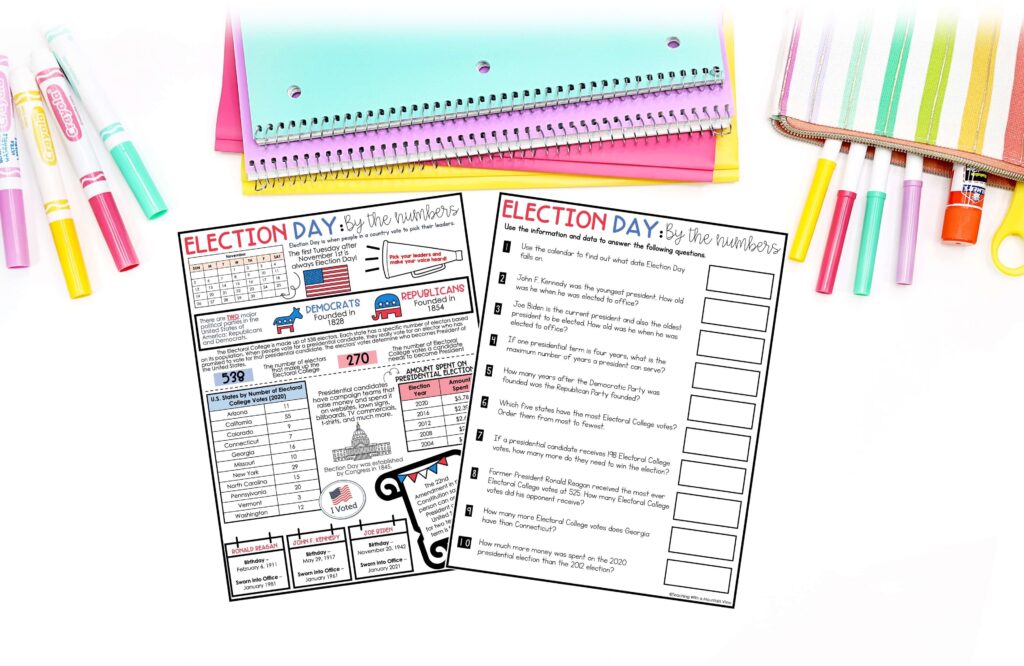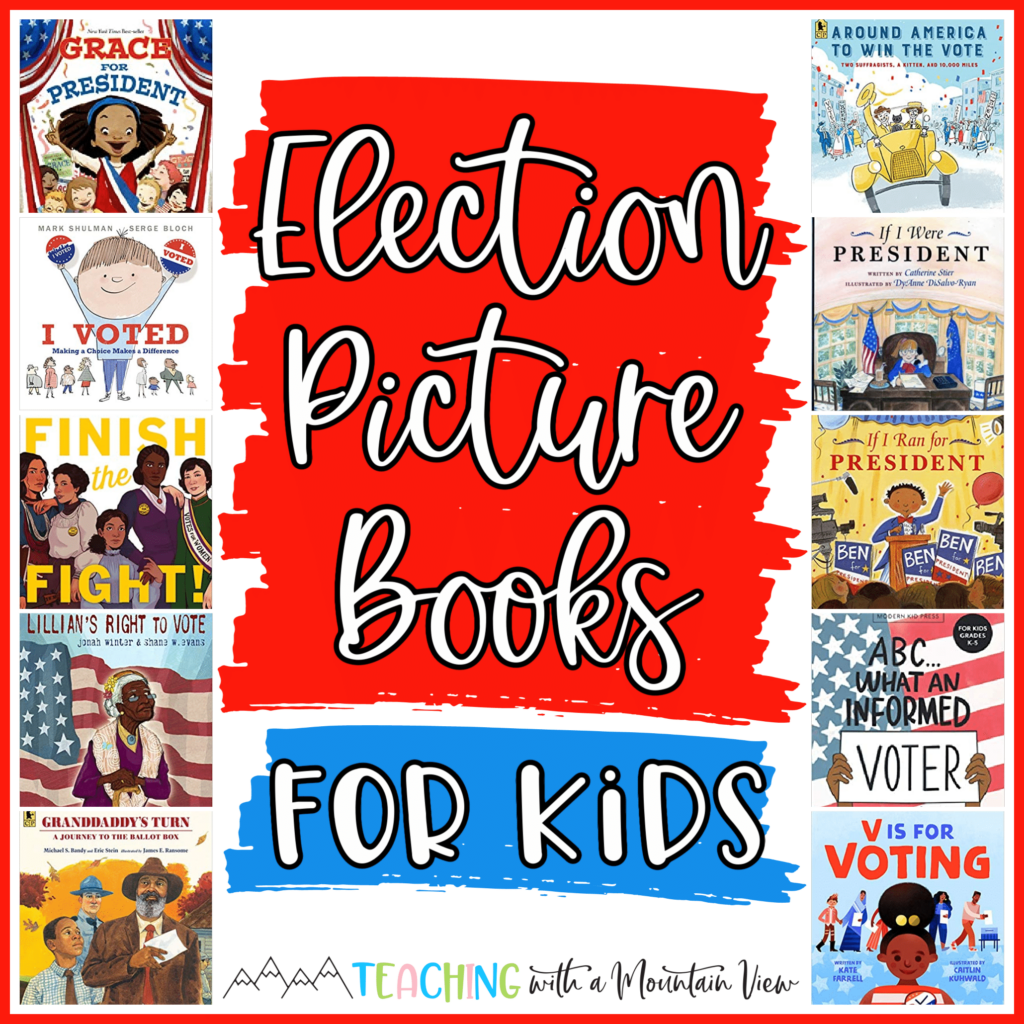Teaching the Presidential Election
By Mary Montero
Share This Post:
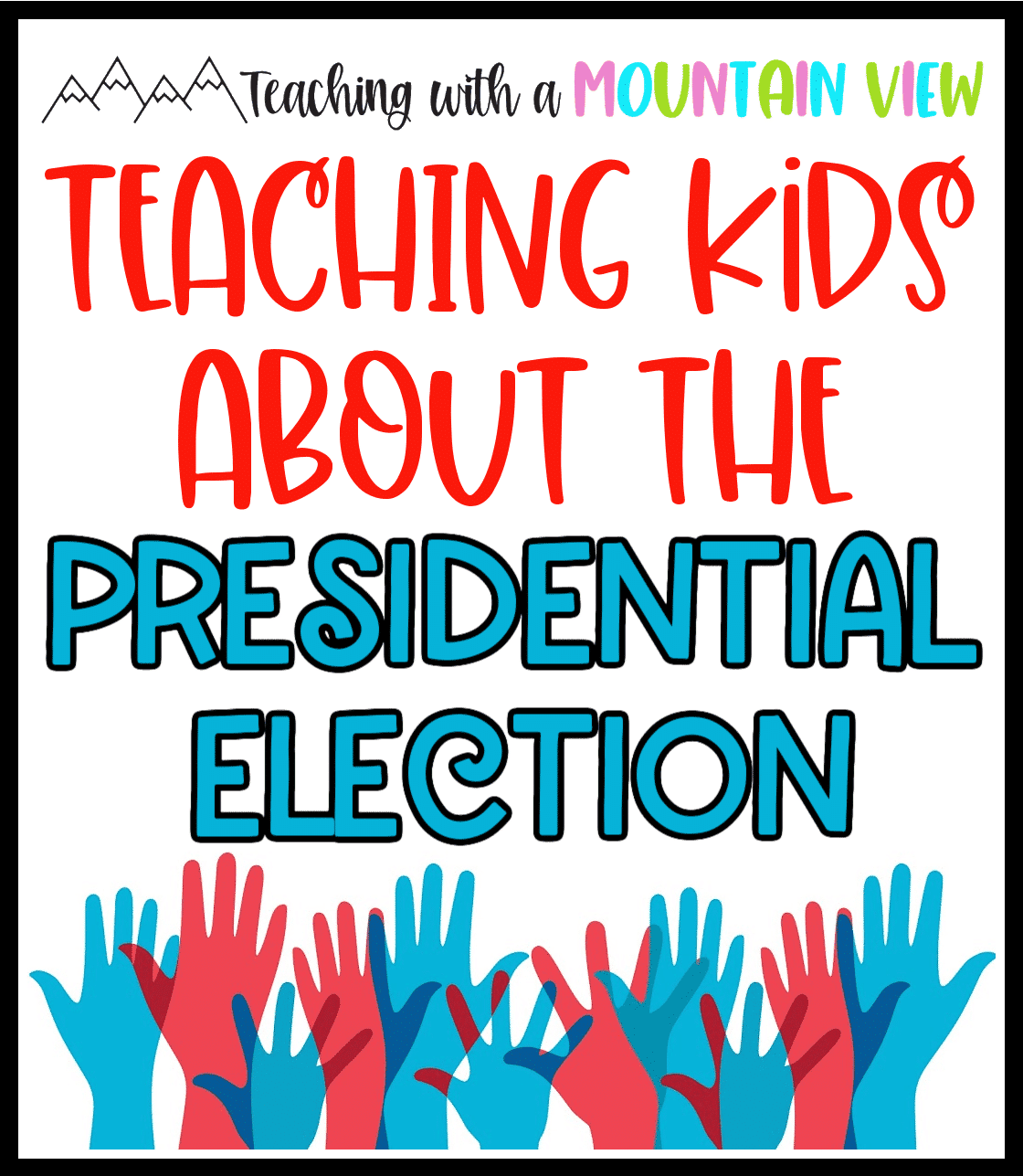
I have a bit of a confession. During the 2016 election, I was teaching 4th grade. Even though government was one of our standards that year, I avoided teaching the presidential election at all costs. I was worried. Worried about offending anyone, unintentionally sounding biased, or not knowing enough about the intricacies of the system to cover it well. In hindsight, I really regret this. My students heard their parents talking about it at home, watched the commercials and debates on television, and saw candidate signs in their neighbor’s lawns. Many of them were eager and ready to learn more about the presidential election, but I missed that opportunity out of fear.
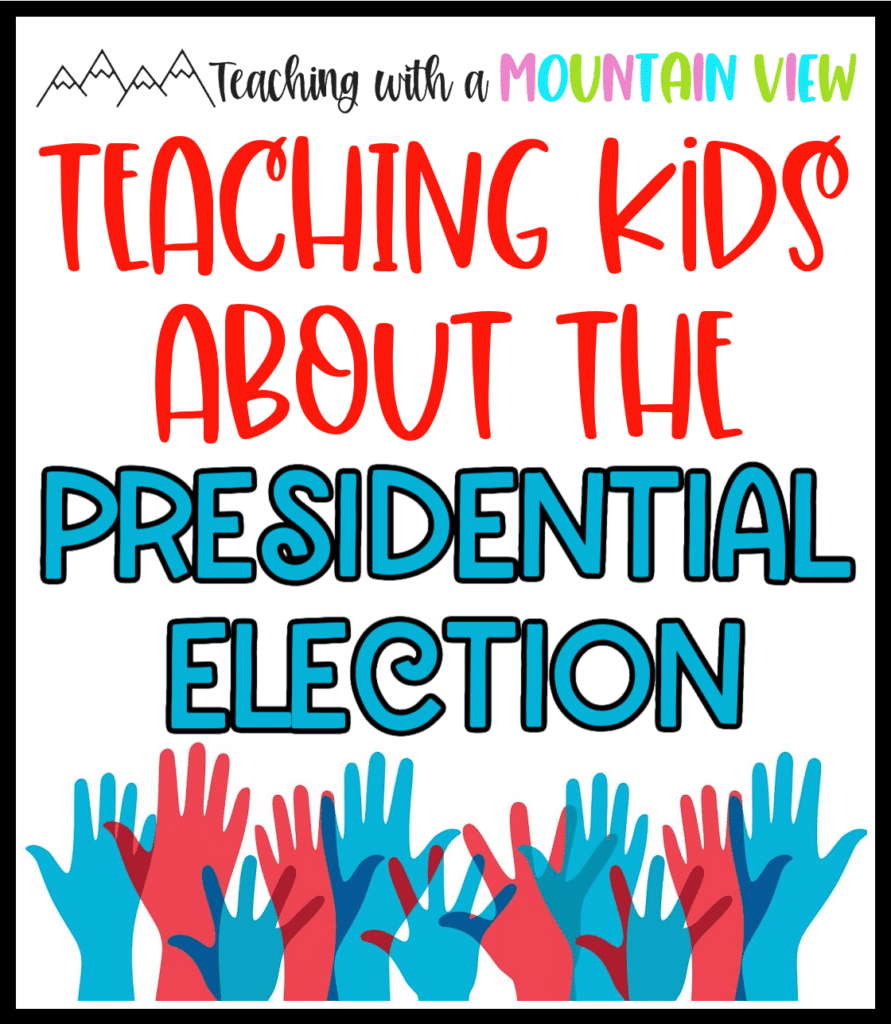
2020 was different. I set out to create a completely non-biased and nonpartisan plan for teaching the presidential election that would alleviate my fears from 2016 AND give students the opportunity to learn about the election in a fun and engaging way. I worked tirelessly on this resource and election lesson plans, and I hope it can help you accomplish this, too!
First things first: I do not specifically address the individual election or the candidates involved while teaching the presidential election. Instead, the learning activities focus on the facts: the history of voting, the election process, the Electoral College, the inauguration, and so much more. That means you can use this resource for ANY election year!
Teaching the Presidential Election Math and Literacy Activities
Are you looking for a comprehensive resource to teach the presidential election process? This is it! I have created non-biased, kid-friendly, and super-engaging resources for students to learn all about the elections in the United States.
Teaching the Presidential Election in Reading
The election is so complex, and there is so much to teach about it. I wanted to make sure it was accessible to kits and not overwhelming. In doing so, I decided to incorporate a fictional element as well as informational texts. We are going to incorporate a TON of picture books (keep scrolling for more info on that), but I also created my own resource to support teaching the election. The left side of the booklet I created follows Maria, a student whose class is conducting their own election process to decide on their class field trip. Each left/ride side pair of pages covers one part of the election (the history, candidates, parties, conventions, etc.), so the right side has informational text and features about the real election process.
As students read, they use the brochure template to keep track of their learning. I have also provided 3-5 discussion and reflection questions to accompany each pair of pages so that you can really dive into the information, including how the fiction and nonfiction pieces go together.
Don’t want to cover everything here? No problem. Not only have I included two ways to compile the booklet to make your prep easier, but I have also included single page versions of everything so you can pick and choose what you’d like to teach.
Do you teach digitally? No worries! I’ve got you covered. All of this is included in multiple digital options, too. You can assign an interactive version, a read-only version of the booklet, or single pages from the booklet.
Are you concerned about introducing biased material? Me too. I had this fact-checked and bias-checked by multiple independent editors and experts and worked carefully to avoid any bias or controversial statements.
Are you worried about addressing specific candidates? I get that. While you definitely can do this if it works for you and your class, I decided not to incorporate those specifics into this resource.
If you are ready to teach the presidential election with this resource, you can find it here.
Teaching the Presidential Election in Math
You can also use this dynamic election math project to teach about the United States presidential election in your math block. It covers
- Calendar Skills
- Map Skills
- Addition & Subtraction
- Area & Perimeter
- Place Value (Standard, Expanded, and Word Form)
- Rounding
- Comparing Numbers
- Graphing
- Elapsed Time
- Coordinate Graphing
- Time (Reading a Clock)
- Multiplication & Division
This Election Day by the Numbers activity can also help tie the election theme into math. This activity is perfect for 4th grade and up (and advanced 3rd graders) as an engaging way for your students to work on math skills and apply them to the real-world election at the same time! Your students will practice
- Real-world facts and application
- Multi-step AND single-step problems
- Conceptual AND computational understanding
- Comparing and ordering whole numbers
- addition
- subtraction
- multiplication
Free Resources for Teaching the Presidential Election
While I have provided a ton of information and activities for teaching the presidential election in the resource, I wanted to add just a bit more. There is a glossary of bolded words from the text, so I wanted a way for my kids to be able to keep track of their definitions. I made a little election vocabulary foldable for them to use in their reading notebooks, and then it snowballed, and I added several more activities!
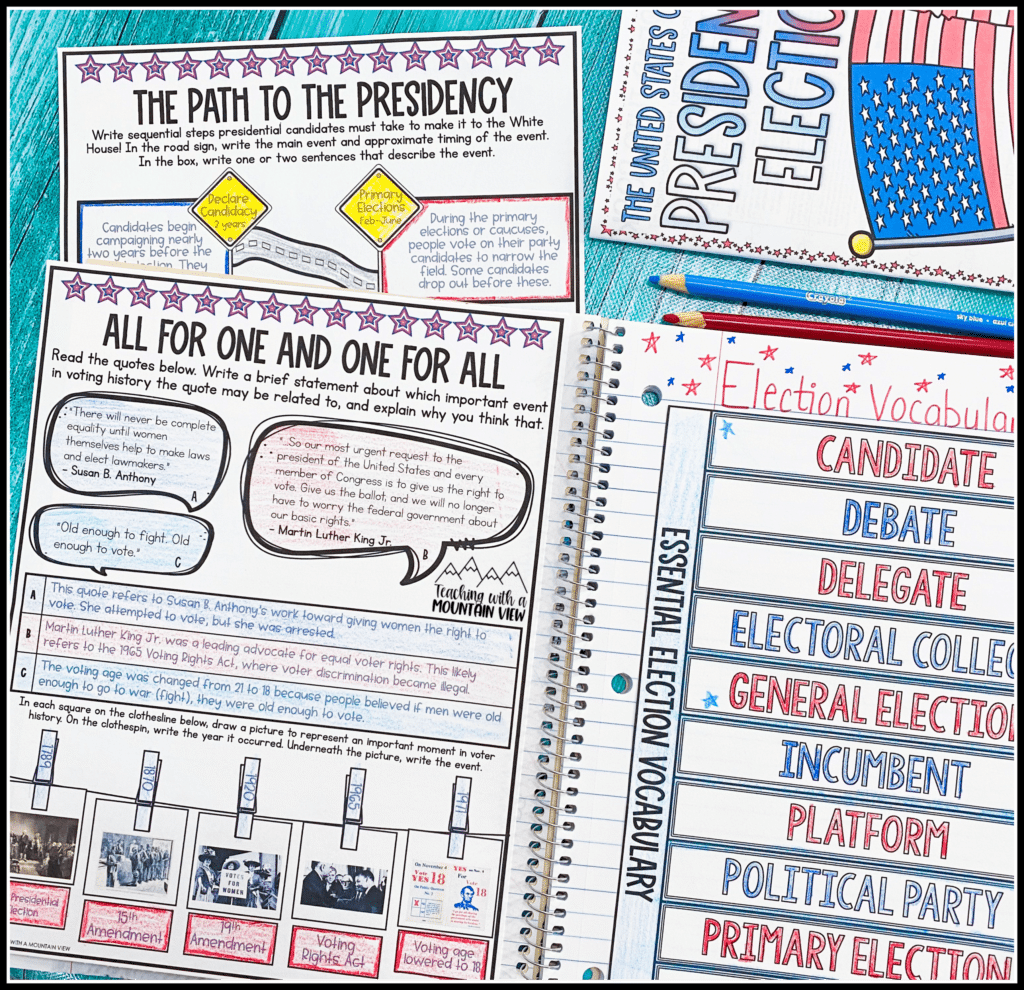
Instead of adding these four pages of election activities to the product, I decided to offer them free here. You can use them without the resource, but I intend to use the information from my election resource to complete the tasks.
Kids Books about the Presidential Election
I mentioned earlier that we were going to read a TON of election books for kids. Luckily, there are dozens of fantastic choices out there that cover so many aspects of the presidential election. I love following Ramona Recommends and The Book Wrangler on Instagram for book recommendations, but here are a few of mine!
As an Amazon Associate, I earn from qualifying purchases. You can see all of my choices linked HERE on my Amazon Storefront. These are all books we own and believe in!
I have carefully selected a wide variety of books that show multiple perspectives… these books cover the history of voting, suffrage, the importance of voting, the election process, etc. It is really important to me that my kids understand that not everyone was just handed the right to vote, and these books really help to accomplish that.
I would LOVE to hear your ideas for teaching the presidential election this year! Drop me a message on Instagram or in our FREE Inspired in Upper Elementary Facebook group.
Mary Montero
I’m so glad you are here. I’m a current gifted and talented teacher in a small town in Colorado, and I’ve been in education since 2009. My passion (other than my family and cookies) is for making teachers’ lives easier and classrooms more engaging.







